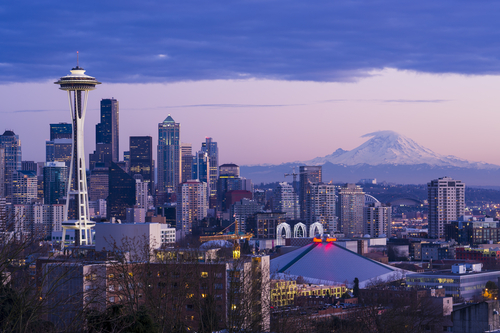“Seattle Expands its Leadership on Green Infrastructure, But Where is the EPA?,” asks Karen Hobbs
Roofs to Rivers II
“I’m in Seattle today and, as always, am struck by the natural beauty that surrounds this city. It’s easy to feel inspired at almost every turn,” wrote Karen Hobbs, Senior Policy Analyst with the Natural Resources Defense Council (NRDC), in her blog posted on November 3, 2013.
 “It’s also easy to be inspired by how the city continues to embrace the use of green infrastructure to better manage its stormwater and protect Puget Sound, Lake Washington and the rivers and streams that feed into those iconic waterbodies.”
“It’s also easy to be inspired by how the city continues to embrace the use of green infrastructure to better manage its stormwater and protect Puget Sound, Lake Washington and the rivers and streams that feed into those iconic waterbodies.”
“Today, NRDC released an update to our 2011 report Rooftops to Rivers II, which shows how, in just two short years, cities like Seattle (along with Washington, DC, Milwaukee, Tucson and 16 others) have expanded their use of green infrastructure strategies, recognizing it as a cost-effective approach that provides multiple benefits. I wish I could report that this local innovation and action is being matched at the federal level, but more on that later in this post.”
How Seattle is providing leadership
“So, what’s happening in Seattle? In March 2013, Seattle Mayor McGinn signed an executive order directing city agencies to develop a community-wide green stormwater infrastructure (GSI) plan with the goal of managing 700 million gallons of stormwater runoff annually with green infrastructure by 2025. That goal was endorsed by the Seattle City Council, which, in July, passed its own resolution establishing that ‘green stormwater infrastructure is a critical aspect of a sustainable drainage system’ and adopting a policy to ‘rely on GSI for stormwater management wherever technically feasible and aligned with urban development priorities’.”
“A number of city agencies, led by the Office of Sustainability and Environment, are now working together to figure out how to implement the visions laid out by the mayor and city council. They’re looking at strategies to better manage stormwater using the public right-of-way, ensuring that development codes support broader green infrastructure deployment and doing economic analyses to measure both public and private benefits of these strategies.”
Where’s EPA?
“It’s exciting and important work – and exactly the type of leadership you’d hope the federal agencies would show nationally. EPA is most notably absent — the agency has missed multiple deadines to propose new rules to curb stormwater runoff that would incorporate the learnings from cities like Seattle. EPA certainly recognizes the value of green infrastructure, which helps stop runoff pollution by capturing rainwater and either storing it for use or letting it filter back into the ground, replenishing vegetation and groundwater supplies. In fact, EPA just released a series of case studies analyzing the economic benefits of green infrastructure strategies, which includes Seattle.”
“It’s well past time for EPA to better support the green infrastructure work in Seattle and other cities and issue new standards that will allow communities across the country to enjoy the benefits of green infrastructure and clean water,” concluded Karen Hobbs.


